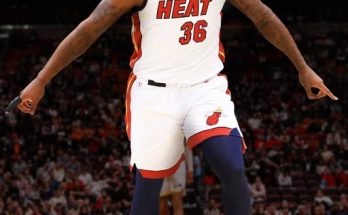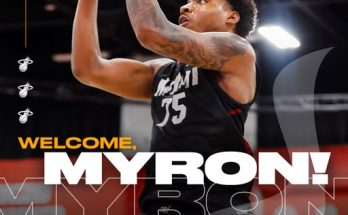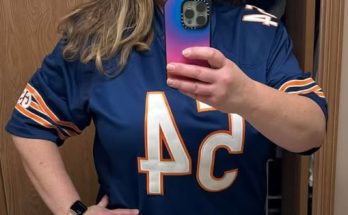It’s not often that Duke Basketball finds itself late to the party in recruiting circles, but when the Blue Devils come calling, the basketball world pays attention—no matter how crowded the room already is. That’s exactly the case with their recent pursuit of an underrated yet undeniably talented high school recruit who, until now, had flown just under the national radar. Despite not possessing the five-star label or the social media fanfare that accompanies many top-tier recruits, this prospect has begun generating quiet buzz among major programs for one reason: he simply produces. Now, Duke has entered the fray, and the recruitment battle just got a lot more interesting.
Sources close to the situation suggest that Duke’s coaching staff had been monitoring the recruit from a distance over the past few months, gathering footage, talking to AAU coaches, and reviewing game tape from the past two high school seasons. What they saw wasn’t flashy—but it was effective. The recruit has shown an extraordinary feel for the game, court vision that belies his age, and a knack for making the right play in every scenario. These aren’t traits you can always quantify in a scouting report or social media highlight reel. They’re the kind of things you see when you’re looking not just for an athlete, but for a basketball mind.
Duke has made a name for itself by landing consensus top-five talent—players like Jayson Tatum, Zion Williamson, RJ Barrett, and Paolo Banchero. But in recent years, the Blue Devils have demonstrated a willingness to take strategic chances on prospects who aren’t yet household names. This pivot reflects a broader understanding within the program: fit matters. Chemistry matters. Basketball IQ matters. And in an era where players transfer quickly and rosters turn over annually, having a few foundational pieces with underrated upside could be the difference between flameout and Final Four.
What separates this particular recruit from others in his class isn’t just his skillset—it’s his story. Hailing from a smaller high school in a region not known for producing basketball powerhouses, the player spent much of his early prep career competing in gyms that didn’t host many scouts. His AAU team, while competitive, never made it to the spotlight circuits that dominate summer recruiting coverage. And yet, despite all of this, his numbers speak for themselves. He’s posted back-to-back seasons averaging over 20 points, 7 rebounds, and 6 assists per game, with shooting splits that reflect his all-around game. Coaches rave about his work ethic. Teammates describe him as a leader on and off the court. And now, college basketball royalty is taking notice.
For Duke to step into the picture now is significant. It means they’ve seen enough to believe not only in the player’s raw talent, but also in his ability to wear the Duke uniform with pride and purpose. The Blue Devils are known for cultivating excellence—not just in skill development, but in culture. The coaching staff, led by Jon Scheyer, understands the value of versatility and maturity. This recruit, although flying under the radar, fits that mold. He doesn’t need the ball to impact the game. He doesn’t need his name in lights to shine. And that’s exactly why Duke likes him.
The timing of Duke’s offer is also noteworthy. With many top prospects already verbally committed or deep into their recruitment processes, the Blue Devils’ decision to make a move now signals both belief and urgency. There’s a sense within recruiting circles that the player is on the verge of a national breakout. A string of standout performances at a recent regional camp caught the attention of several coaches, including some from blue blood programs that hadn’t previously reached out. Word began to spread that the player had “it”—the intangible factor scouts can’t quite define but always chase.
More than just a late offer, Duke’s entrance into the race could shift the momentum entirely. Other programs that had been steadily building relationships with the recruit—schools like Wake Forest, Providence, and perhaps even a few mid-major programs—may suddenly find themselves outpaced by Duke’s brand power. While the player and his family have reportedly expressed interest in taking their time to make a decision, they also understand what a Duke offer represents: not just prestige, but opportunity. The chance to play on national television, compete in March Madness, and develop under a program with NBA connections is the kind of door few can afford to close prematurely.
It remains to be seen how this recruiting battle will unfold, but there’s no denying that Duke’s involvement raises the stakes. One school insider described the recruit as “a sleeper with a star’s ceiling,” noting that his footwork, passing instincts, and defensive versatility reminded them of past Blue Devil role players who turned into NBA contributors. Another staff member mentioned that the recruit’s humility and hunger for improvement made him stand out during their early conversations.
For now, the recruit is keeping things close to the vest. There’s no public top-five list. No commitment date. Just a young man focused on continuing to develop his game and weighing his options carefully. Still, the buzz around his name has grown significantly since Duke’s interest became public. Rivals and 247Sports analysts are already re-evaluating where he ranks in his class. Some believe he could jump into the top 75 nationally if he continues his upward trajectory through the fall.
This moment also reflects something broader about Duke’s evolving recruiting philosophy. In an era where scouting is more digital and data-driven than ever before, the Blue Devils are showing that they still trust their eyes and instincts. While landing five-stars will always be a part of the program’s DNA, there’s a renewed focus on finding high-character, high-upside players who may not have a national profile yet—but who possess the tools to thrive in Durham. That hybrid strategy—blending elite talent with smart, underrated prospects—might just be the formula for long-term consistency in the modern college basketball landscape.
If this recruit does choose Duke, it will say something about both sides. For the player, it’ll represent validation—that his hard work, quiet confidence, and dedication to the fundamentals were seen and rewarded. For Duke, it will reinforce that the program is capable of recognizing value where others might overlook it. And should things go well, this story could evolve into one of those rare but memorable tales: the one where a low-profile kid from an unheralded background walks into Cameron Indoor and becomes a fan favorite, a glue guy, and maybe even an NBA draft pick someday.
That’s the dream scenario, of course. But before any of that can happen, there’s still a recruitment to win. Other schools won’t back down easily. Some have been with the player since the early stages and can offer the comfort of familiarity. Others may try to sway him with promises of instant playing time or being “the man” from day one. Duke, on the other hand, offers a different pitch: come be part of something bigger. Come grow, compete, and challenge yourself. Come learn what it takes to win at the highest level—not just in college, but beyond.
As the fall circuit approaches and official visits begin, all eyes will be on the decisions this recruit makes. But one thing is clear—he’s no longer a hidden gem. Not with Duke in the picture. The Blue Devils have officially entered the battle, and now the college basketball world waits to see if their calculated gamble on an underrated star will pay off in Cameron Indoor Stadium. If the early signs are any indication, Duke may have just uncovered the best-kept secret of this entire recruiting cycle.



